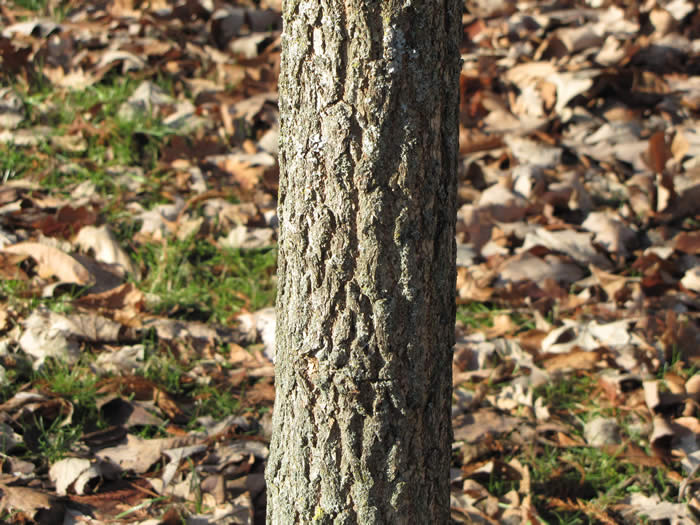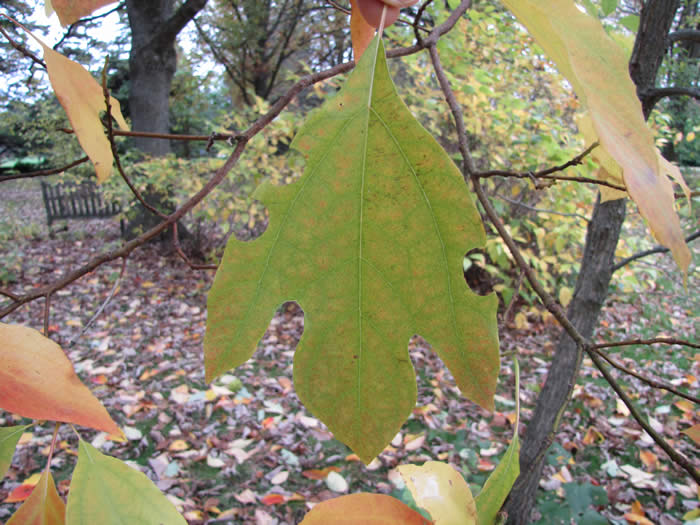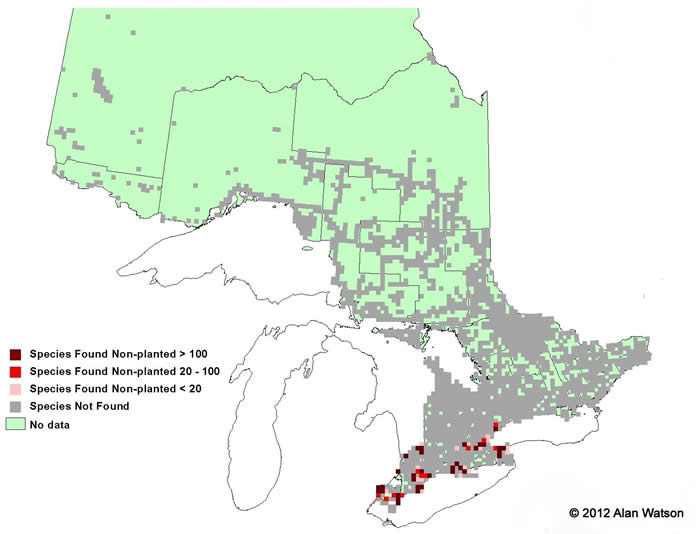Sassafras - Sassafras albidum
Sassafras is a small, fast growing tree that can only flower after 10 years. Bark of the Sassafras produces orange dye and the roots are used to make oil of Sassafras which is an ingredient in soaps and perfumes. The bark was also used to make tea and root beer. At one point in time the roots were added to some medicines but any healing claims were proven false. It is important to note that dried Sassafras bark which is found in some health-food stores should be used with caution if at all as it contains Safrole which is a carcinogenic item and is banned in the USA and Canada. Wild Turkeys, squirrels, black bears and foxes all feed on the fruit of Sassafras.

The bark of the Sassafras is dark brown with many deep grooves and soft corky ridges. Sassafras can grow up to 20 m in height and 50 cm in diameter. Photo by Chris Earley

This terminal bud is oval shaped, measures 10-15 mm in length and exhibits several scales. Lateral buds are usually smaller but still the same greenish colour. Photo by Chris Earley.

Sassafras leaves are alternate and simple, measuring 10-15 cm long. They are blunt-tipped with 3 prominent veins. The leaves can either be lobed (2-3 per leaf) or unlobed with none at all. They are slightly hairy or hairless and turn yellow to red in autumn. They also give off a spicy odour when bruished or crushed. Photo by Chris Earley.

This is a Sassafras leaf that has fallen in autumn. Photo by Chris Earley.

Ontario Tree Atlas map of non-planted Sassafras. 1995-1999.
References
Farrar, J.L.. 1995. Trees in Canada. Fitzhenry & Whiteside Ltd. Toronto. ON. 504 pp.
Kershaw, L. 2001. Trees in Ontario: Including tall shrubs. Lone Pine Publishing. Edmonton. AB. 240 pp
Muma, W. 2011. Ontario Trees and Shrubs. [Online] Available: www.ontariotrees.com
OMNR, 2011. Ontario Ministry of Natural Resources: Ontario Tree Atlas. [Online] Available: http://www.mnr.gov.on.ca/en/Business/ClimateChange/2ColumnSubPage/267027.html
OMNR, 2008. Ontario’s Biodiversity: Species at Risk.